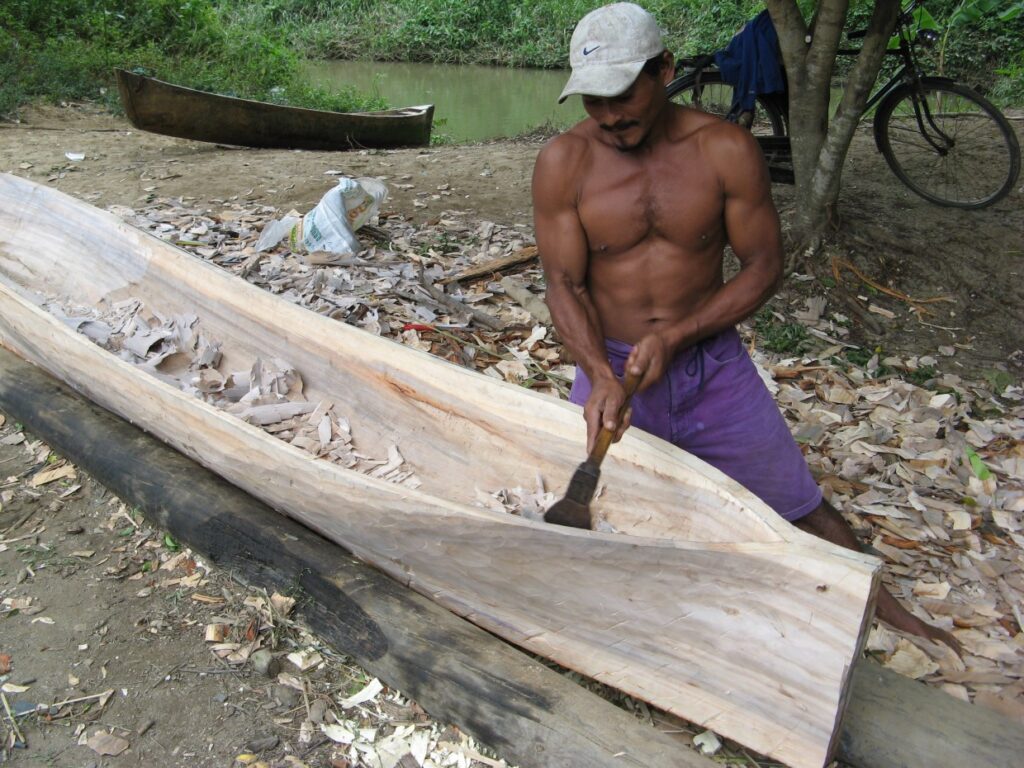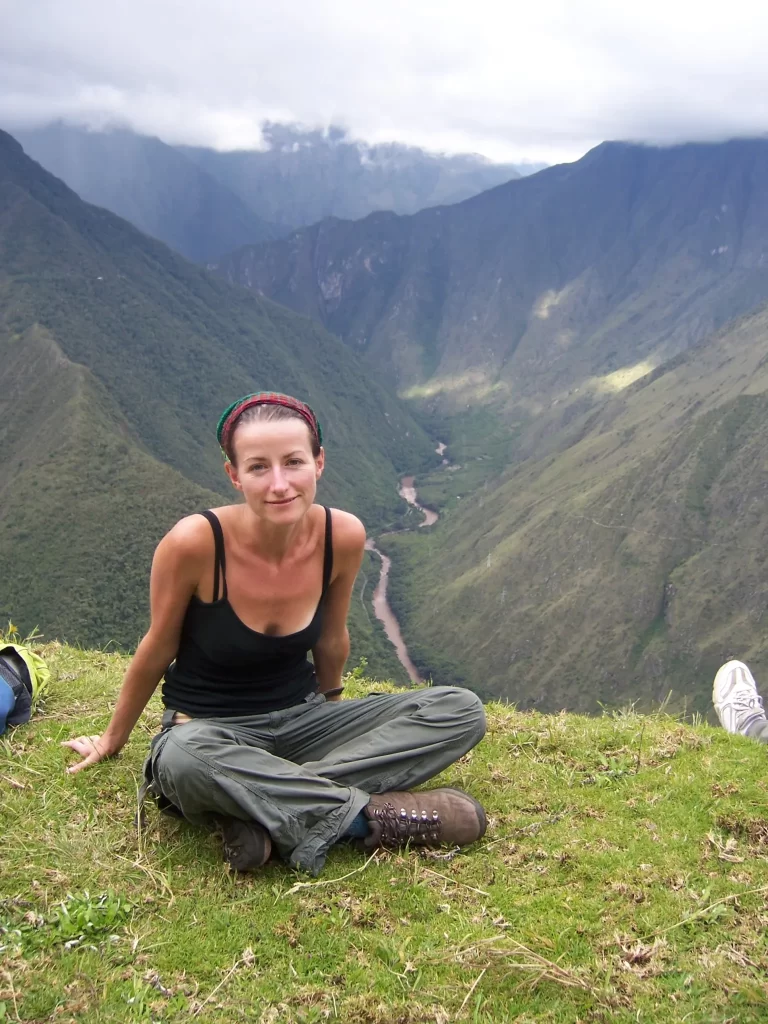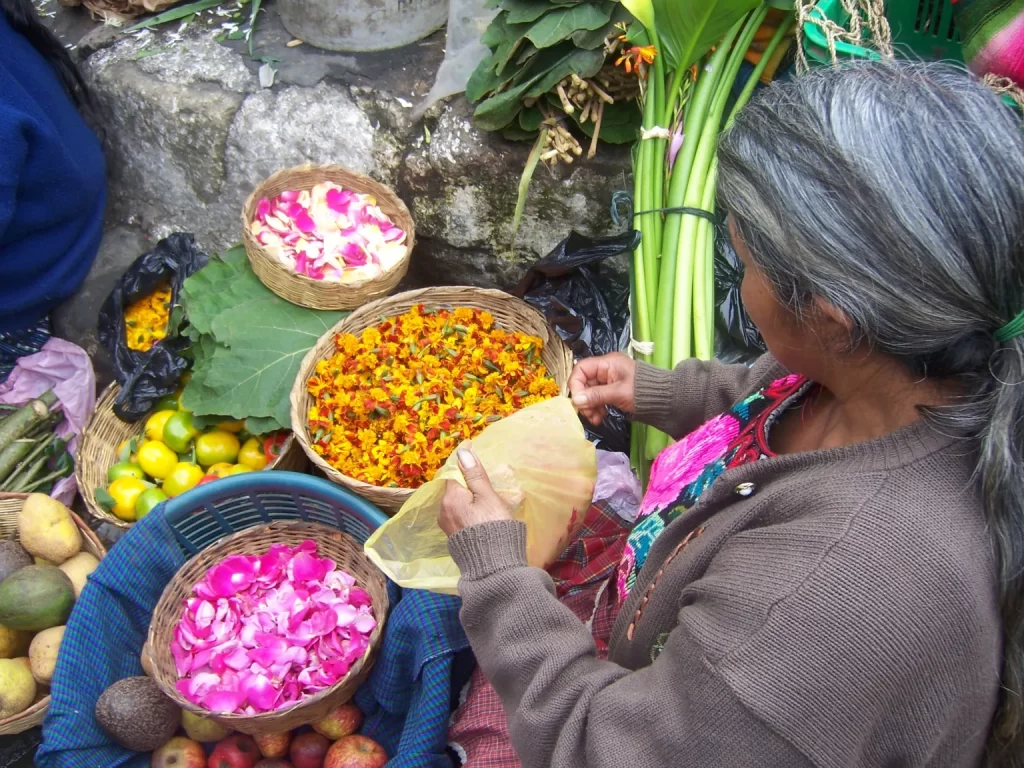
GO SOLO: RÓISÍN SORAHAN had a good job and a comfortable life. Then she decided she could grow old very quickly waiting for the perfect man to show her the world. So she took a break from work – and it has changed her life.
MY GUT DECIDED that I was going travelling long before my head agreed.
I was in my early 30s. I had a very comfortable life, with a good job in PR and a mortgage on a house. My life was safe and predictable. It would have been so easy not to go.
But you could grow old very quickly sitting on the sofa, waiting for the perfect man to show you the world. This time last year I was single, curious and bored. The only things that would stand in the way of my leaving were my old buddies, fear and self-doubt.
Of course my head put up a good fight. I told myself that I had good friends, a close family and an everlasting mortgage, but my gut was relentless. It became impossible to stay.

Once the decision was made, it was fairly easy. I negotiated a five-month leave of absence from work and booked a flight to Belize. It’s English-speaking, on the Caribbean, and I thought it would be an easy introduction to Latin America.
I had no idea what to expect, and the only plan I made in advance was to book a four-day trek to Machu Picchu, in Peru, to arrive at the hidden city on St Stephen’s Day.
I loaded my backpack with travel guides for Central and South America and left Ireland on a grey October morning with a vague certainty that I would figure it all out when I got there. I was nervous, but I promised myself before I left that I would pour myself into this adventure. I remembered what my aunt, another dreamer, had said to me some years before: “It’s important to live life as well as read about it.”
I figured that I would pick up Spanish along the road and made an unconscious effort not to overthink what I was doing. Had I dwelled on the fact that I was planning to travel solo through a continent that spoke little English, was renowned for its machismo and was a world away from my experiences, I might never have gone at all.
I spent my first few days on Caye Caulker, an island that is no more than an eight-kilometre stretch of white sand off the coast of Belize. There are lots of hostels and small family-run hotels on the island, and transport is on foot, by golf cart or by bike; the dress code is T-shirts, shorts and bare feet.
It is still home to a community of Rastafarians, who idle by the sea, smoking sweet-scented spliffs, or line the main street, tempting girls with soft glances and cajoling lines.
A woman travelling alone is seen as easy prey, but having survived the Leeson Street strip it hardly cost me a thought. My senses blossomed in the sun as I eased myself into a different way of living. I took the earphones out and, instead of walking on grey Dublin pavements, was open to all the rhythms of the Caribbean.
One evening I joined a group of travellers for dinner on the beach. It was a mixed group of nationalities, including the funniest American I had ever met and an English man bloated by his Belize investments. The food was lush, but I wasn’t in the mood for the boozing and dancing that the night was heading towards, so I made my excuses and faced into the elements with the naivety of one who hadn’t yet met a tropical rainstorm.
I was instantly drenched as the sky opened. I took cover under a canopy where I was soon joined by the local barber, whose shop was just across from my shelter. He was beautiful, poised, and he offered me a beer.
Lesley, he told me, was his family name. More importantly, he was the island’s only barber. By this, he had me believe, he was a man of some substance.
Conversation wandered, and I had to weave my way out of an entanglement that included talk of night swims, boat rides and the barber travelling with me to Guatemala. I was alone, in control and in my element. The night ended with his giving me a lift home on the crossbar of his bike as he silently reproached me for refusing to join his escapades.

I left the island and made my way inland. As the bus pulled into San Ignacio, a frontier town on the edge of the rainforest, I glimpsed an old man with the longest dreadlocks I had ever seen. They were piled in a nest on his head. For five Belizean dollars, or less than €2, you could have a picture taken with him. Cough up 10 dollars, or about €3.75, and the Rasta Rapunzel would let his locks down.
The town is a tumble of streets, lined with quare hawks. Ramshackle hostels with broken balconies look as if they have been hastily built of Lego; backpackers stroll from one adventure merchant to the next, lured by night-time hikes, horse-riding adventures, white-water rafting and caving explorations. I didn’t linger, preferring to leave the clatter behind. I booked into Black Rock Lodge, in the heart of the wilderness, perched above the Macal River.
My cabin was beautiful. It was hard to tell where the rainforest ended and my retreat began, with its flagstone floors and scattered wild flowers. The lush green canopies had been pushed back just enough to make room for a hammock under my porch.
Next I went to Guatemala, taking a taxi to the border – and, after the relative safety of Belize, emerging in a shock of confusion.
The border crossing was chaotic. My confidence was swamped by a wave of street hawkers, van drivers and money changers, hands thick with notes. I was bombarded by traders, speaking in Spanish and seeking my business. But I made three good decisions. I listened to the youth who I had initially thought was trying to steer me towards his taxi, when in truth he was herding me to a dilapidated hut to get my passport stamped. I responded with a smile when I heard the funniest American I had met in Caye Caulker bellow “Hey, Ireland” as he sat on the side of the street, taking stock in the heat before he found an onward ride. And I wavered for no more than a moment when a Peruvian man who had spotted me stumble bewildered across the line pulled up beside me in his red van and offered me a lift to Flores.
Of course you should never take a lift from strangers. But my world was a stranger, and I had to trust my gut. My gut was perched in the back of the van on a cluster of boxes, laughing its head off with the American and getting its first Spanish lessons from our driver, Mario. After sharing the lift we found our paths moving in the same direction for several weeks.
We went our separate ways again, unsure when, where or even if we would meet again. My journey led me to the strangest and most wonderful of places. I toasted marshmallows in the crater of a volcano in Guatemala. I travelled many kilometres in local chicken buses, with shaven tyres and impossibly heavy loads. I saw the blue- footed booby, a comic-book bird, on the Galapagos Islands and was tempted by the captain of our beautiful boat, who offered marriage and a lifetime of sunsets.
I perched above the freezing clouds at Quilotoa Laguna, a hidden green gem high in the Andes in Ecuador. I slept in a mud hut in an oasis in the mountains and rose at 3am to hike to the peak to see condors soaring at dawn. I encountered magic at the Witches’ Market in La Paz, in Bolivia.
In Bolivia I also travelled on some of the worst routes I have ever encountered; one 320km journey took 31 hours. We took our chances and crossed swollen rivers in a battered bus that smelled of raw meat.
There were no bridges, and it wasn’t uncommon for a bus to flip in a flood or to get wedged in knee-deep muck. When it happened, bags drifted down the river and people waited patiently until they were rescued by passing commuters.
I acquired a broken form of Spanish that helped me to unravel the stories of the people who helped me along my way, showing me that people want to help you to enjoy your travels in their country.
Before I left Ireland I figured I would find places that would seduce me into lingering. But I discovered that I was seldom happier than when my nose was pressed against the window of a bus. Many kilometres were covered in the company of strangers.
But many more were spent with the American, whom I met again in Peru and who become a part of my story, wandering with me through South America and, later, back to Ireland before his travels led him on again to Africa.
I learned more in those five months than I had in years. Some of it was about the sort of life I want to lead and some about the type of person I want to become. I remembered what it was like to be a child, to live in the moment and delight in seeing the new for the first time.
I returned to Ireland with the certainty that I was blessed. I saved hard, quit my job and booked a one-way ticket to the Tanzanian island of Zanzibar, where I will meet the American and continue the adventure.

Go There
Delta Airlines (www.delta. com) flies from Dublin and Shannon to Belize with a stopover in Atlanta.
American Airlines (www.americanairlines.ie) flies from Dublin and Shannon to Belize with a stopover in Miami.
Where to start if you’re thinking of making your own trip
Travelling solo
Travel light. You might have to fling your backpack on to the roof of a chicken bus or walk a couple of kilometres before you catch a ride.
Ditch half your toiletries. Shampoo is a great substitute for shower gel, shaving foam and washing powder.
Dress appropriately. As a person travelling alone, you’re sure to get noticed anyway.
Getting from place to place is a big part of the adventure. Aim to arrive early in the day and, if taking a night bus, find a direct one that doesn’t pick up stragglers along the way.
When you arrive in a new district, check out where’s safe to wander before you venture out alone.
Keep a safe stash of emergency cash. With luck you’ll get to spend it at the airport on the way home.
Don’t be a pushover. Find a polite but firm way of saying no.
Be sensible, not suspicious. Most people want you to have a wonderful experience in their country.
Invent an imaginary boyfriend or girlfriend – Jane Austen fans should have no problem there.
Trust your gut. You’ll end up in places you had never planned and avoid those you should never go to.
Where to stay
Tom’s Hotel. Caye Caulker, Belize, 00-501-226-0102, www.toucantrail.com/Toms- Hotel.html. A functional and clean budget hotel with a beat-up dock facing the sea. The basic cement structure is softened by the family-run atmosphere.
Black Rock Lodge. PO Box 121, San Ignacio, Cayo Belize, 00-501-820-4049, www.blackrocklodge.com. Idyllically perched above the Macal River, this eco lodge is situated in the midst of lush rainforest. If you manage to uncurl from your hammock, onsite activities include horse riding, caving, river tubing and night hiking.
La Castellana Hostel. Luis Cordero 10-47 y Gran Colombia, Cuenca, Ecuador 00-593-7-2827293, www.cuenca.com.ec. A pretty hotel with street-facing balconies and brightly lit rooms. Cuenca, known as the Athens of Ecuador, is a great spot for anyone interested in art and music.
Rumi Wilco Eco Lodge and Nature Reserve. Vilcabamba, Ecuador, www.rumiwilco.com. Rumi Wilco is a self-sustaining conservation project run by Orlando and Alicia Falco. In addition to limited accommodation, the reserve offers volunteer opportunities ranging from one week to three months.
Hotel Fuentes. Calle Linares 888, La Paz, Bolivia, www.hostelbookers.com. A comfortable hotel located in the Witches’ Market. Street stalls are lined with potions and charms, as well as odder offerings, such as llama foetuses and preserved frogs.
Where to go
Chichicastenango, in Guatemala, is a centre of Mayan culture and worship. It also hosts one of Latin America’s most colourful weekly markets, where I stumbled on a Mayan ceremony that was presided over by four shamans and included a lot of incense and the blood sacrifice of a chicken.
Ecuador Verde Pais. Calama E6-19 y Reina Victoria, Quito, Ecuador, 00-593-02-2220614, www.cabanasjamu.com. A locally based tour operator providing trips to the Amazon jungle. I visited the Cuyabeno Reserve, in the northeast of Ecuador, where I caught and was bitten by a piranha.
The Galapagos Islands, more than 900km off the coast of Ecuador, are home to a bewildering mix of species. Avoid large cruise liners when visiting the islands for a more rewarding and ecologically friendly experience. Tours can be arranged by Ecuador Verde Pais (see previous entry).
Saquisili, which is located high in the Andes, is as off the beaten track as the most adventurous could wish for. I couldn’t find accommodation with running water, but I did find my way to the Thursday animal market.
The four-day Inca Trail is a magical adventure, where the journey really is as important as the destination. The Peruvian government is limiting the number of people who can hike the trail at any one time, so it’s best to book well in advance. Gap Adventures (www.gadventures.com) provide a good service with knowledgeable guides.
Colca Canyon, in southern Peru, is one of the largest canyons in the world, and visitors flock to the Mirador Cruz del Condor to catch sight of the mythical condor soaring from its depths. Numerous tour companies, operating in Arequipa, organise three-day mountain hikes through the area.
It is estimated that silver mining in Potosi, in Bolivia, has resulted in the deaths of nine million people over three centuries. A tour of the working mine can be organised a day in advance from any of the operators in the town; it will include a trip to the miners’ market to pick up gifts of dynamite, cigarettes and alcohol for the miners.
The landscape of the Salar de Uyuni and the Reserva Eduardo Avaroa, in Bolivia, ranges from salt plains to snow-capped peaks and glacial lakes stained red or green from mineral deposits. Four-day tours can be easily booked in Uyuni. Ask late and the day before for a last-minute deal.
Perito Moreno, in Argentinian Patagonia, is one of the world’s most impressive glaciers. A hike on the glacier is rounded off with a nip of whiskey, served on ice.
Where to eat
El Patio. San Alberto 18, Sucre, Bolivia. Sucre is renowned for its saltenas– lush meats wrapped in filo pastry, best eaten with a spoon to catch the juice. El Patio serves the best I tasted, on a beautiful colonial patio filled with bougainvillea.
Cuy– guinea pig roasted whole, teeth and claws included – is an Ecuadorian speciality that is very popular among the indigenous Indians living in the mountains. I came across the creature in many local huts that served as eateries.
Ecuadorian soup, served typically in the markets in the highlands, is as rich and wholesome as any Irish stew. Ingredients can vary from chicken claws to potato, corn and avocado.
Parilla 1880. Defensa 1665, San Telmo, Buenos Aires, Argentina, 00-54-11-43051746. A meat lovers’ paradise, it’s an extremely good grill with a bohemian feel. The rump steak and chips will keep your mouth watering for days.
© Róisín Sorahan
Article originally published by The Irish Times